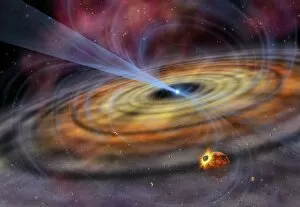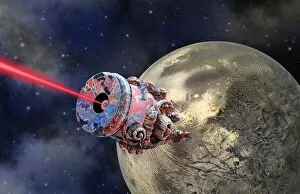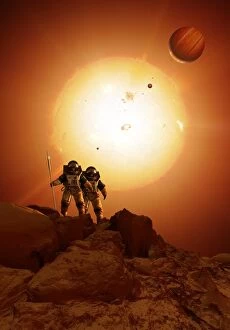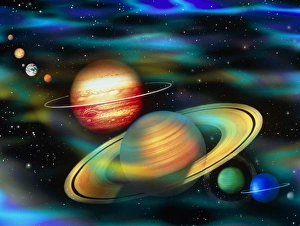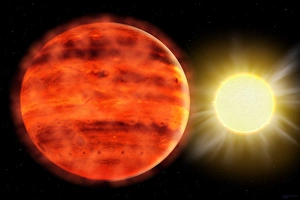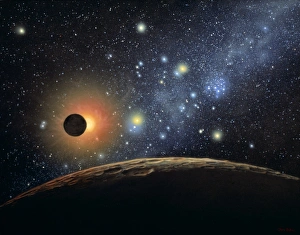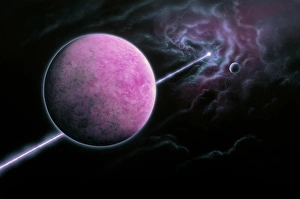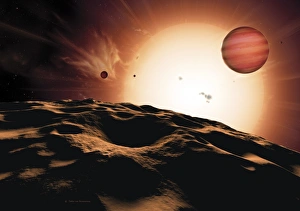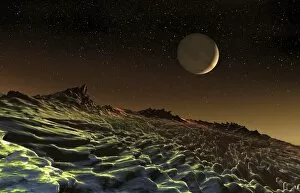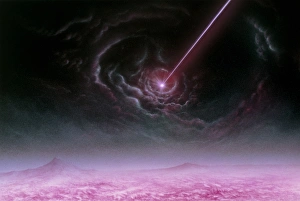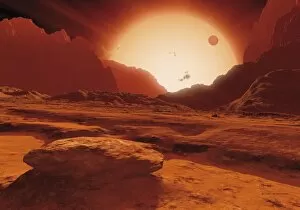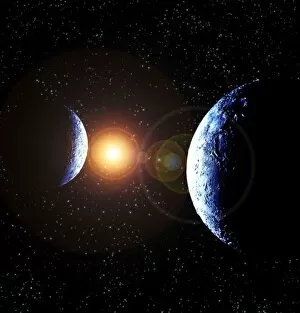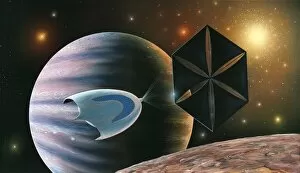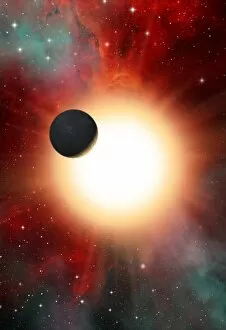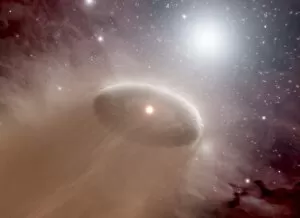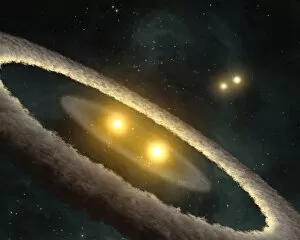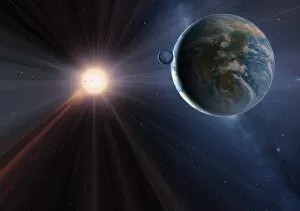Planetary System Collection (page 2)
Exploring the vast expanse of our planetary system, we are constantly amazed by its wonders
All Professionally Made to Order for Quick Shipping
Exploring the vast expanse of our planetary system, we are constantly amazed by its wonders. From the familiar Solar system planets to the distant realms of Kepler-35 and Alpha Centauri binary stars, each celestial body holds a unique allure. Gazing upon Jupiter from Europa, an ethereal artwork captures the mesmerizing beauty of this gas giant. Its swirling storms and colossal size leave us in awe of its grandeur. Meanwhile, another stunning artwork unveils an Earth-like planet, reminding us that there may be other habitable worlds beyond our own. Intriguingly, the Kepler-35 planetary system comes alive through captivating artistry. With C015 / 0790 as our guide, we witness a dance among multiple planets orbiting their host star in perfect harmony. And not far away lies Alpha Centauri's binary stars and planets - a breathtaking sight that ignites our imagination about potential life forms in these distant reaches. Venturing even further into uncharted territory, we encounter a Super-Earth extrasolar planet depicted in C015 / 0800 artwork. This massive world challenges our understanding of what constitutes habitability and pushes us to ponder new possibilities for life beyond Earth. Amongst these extraordinary discoveries is the enigmatic Halo planet - an intriguing concept brought to life through artistic interpretation. Its mysterious nature captivates scientists and dreamers alike as they contemplate its origin and composition. Comparisons between various planetary systems come alive through vivid illustrations that showcase their diversity and complexity side by side. These artworks serve as reminders that while each system has its own distinct characteristics, they all share a common thread: their place within the vast tapestry of cosmic wonderment. Returning closer to home within our Solar system's embrace, we marvel at views from Mars' surface – first witnessing Saturn majestically dominating the sky above Mars before being treated to glimpses of Saturn's moon accompanied by satellites against this alien backdrop.


